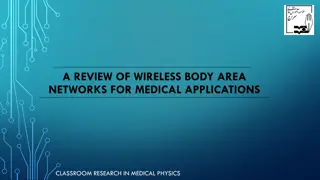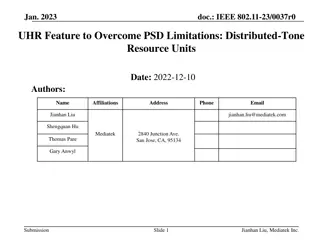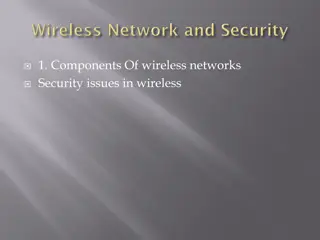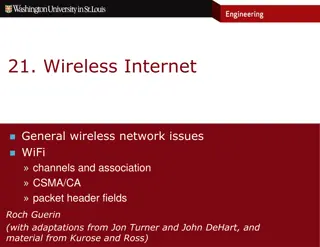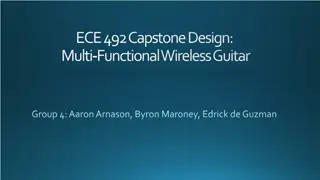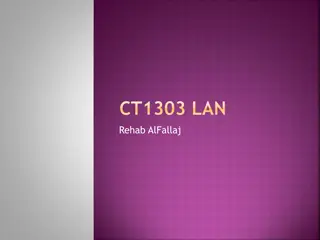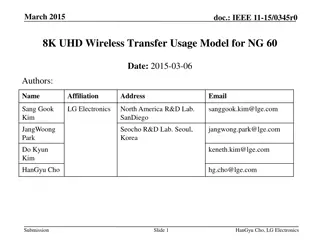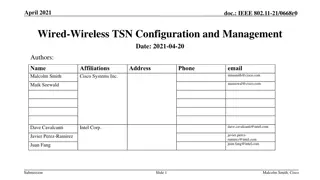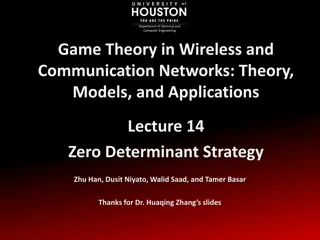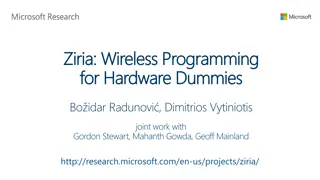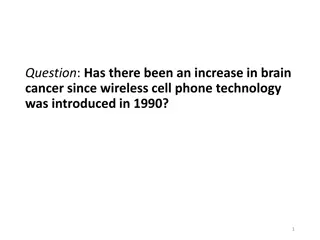Understanding Wireless Power Technology
Explore the functionality of wireless power technology, focusing on applications like battery charging for mobile devices. Learn about the system components, power conversion processes, control mechanisms, and communication between transmitters and receivers. Discover the principles behind wireless power transfer via magnetic induction and how it powers various devices efficiently.
Download Presentation

Please find below an Image/Link to download the presentation.
The content on the website is provided AS IS for your information and personal use only. It may not be sold, licensed, or shared on other websites without obtaining consent from the author. Download presentation by click this link. If you encounter any issues during the download, it is possible that the publisher has removed the file from their server.
E N D
Presentation Transcript
Wireless Power How it works Disclaimer: The purpose of this information is to explain the wireless power technology It can differ in some aspects from the specification.
Target Main application Battery charging, or other suitable loads For wide range of mobile devices Mobile phone, camera, mp3 player, headset, Up to 5W of power delivery More power at later versions Power transfer via magnetic induction Loosely coupled transformer At short distance (few mm) dB/dt I 2
System Overview (Top View) Base Station Contains one, or more transmitters Transmitter provides power to receiver Mobile Device Contains a receiver that provides power to a load (e.g. a battery) Receiver provides control information to transmitter Base Station Mobile Device Transmitter Transmitter Transmitter Receiver System Control Load Power 3
System Overview (Power Conversion) Power Conversion Unit converts electrical power to wireless power signal Power Pickup Unit converts wireless power signal to electrical power Base Station Mobile Device Transmitter Transmitter Transmitter Receiver System Control Load Power Conversion Power Pick-up Power 4
System Overview (Control) Receiver controls the power to the output load To the need of the mobile device (required power) To the desired operation point (e.g. output current, voltage) Transmitter adapts power transfer To the need of the receiver (required power) To the desired operation point (e.g. primary coil current) Base Station Mobile Device Transmitter Transmitter Transmitter Receiver Control Control System Control Load Power Conversion Power Pick-up Power 5
System Overview (Communication) Receiver sends messages To provide control information to the transmitter By load modulation on the power signal Transmitter receives messages To receive control information from the receiver By de-modulation of the reflected load Base Station Mobile Device Transmitter Transmitter Transmitter Receiver Control Control System Comm Comm Messages Load Reflected Load DeMod Mod Power Conversion Power Pick-up Power 6
Power Conversion (Transmitter) Primary coil (Lp) + serial resonance capacitor (Cp) Inverter: e.g. half bridge Coil array implementation Controlled by e.g. frequency or voltage Power Conversion Power Conversion Impedance Matching Half Bridge Cp Freq Freq Lm Multiplexer + + Cm Lp Lp - - 7
Power Pick Up (Receiver) Secondary coil (Ls) Serial resonance capacitor (Cs) for efficient power transfer Parallel resonance capacitor (Cd) for detection purposes Rectifier: full bridge (diode, or switched) + capacitor Output switch for (dis-)connecting the load Power Pickup Unit Cs Cd C Load Ls 8
Communication (Modulation) Receiver modulates load by Switching modulation resistor (Rm), or Switching modulation capacitor (Cm) Transmitter de-modulates reflected load by Sensing primary coil current (Ip) and/or Sensing primary coil voltage (Vp) Transmitter Receiver Modulation Modulation Cp Cs Cm Cd Rm Load + C IpVp Ls Lp - Power 9 9
Communication (Data-Format) 0.5ms Speed: 2 Kbit/s Bit-encoding: bi-phase Byte encoding: Start-bit, 8bit data, parity-bit, stop-bit Packet Structure Preamble (>= 11bit) Header (1 Byte) Indicates packet type and message length Message (1 .. 27 Byte) One complete message per packet Payload for control Checksum (1 Byte) 1 0 1 0 1 1 0 0 Start Parity Stop b0 b1 b2 b3 b4 b5 b6 b7 Preamble Header Message Checksum 10
Communication & Control Transmitter Receiver Start Transmitter provides signal and senses for presence of an object (potential receiver) Receiver waits for signal Signal Start Start Object detected Signal Ping Receiver indicates presence by communicating received signal strength Transmitter detects response of receiver End Transfer / Error / Timeout Signal Strength Ping Ping End Transfer / Signal Lost Rx Detected Identification & Configuration Receiver communicates its identifier and required power Transmitter configures for power transfer Identification ID&C ID&C Required Power Power Transfer Receiver communicates control data Transmitter adapts power transfer Configured Control Data PT PT End Power Adapted 11
Power Transfer Control Transmitter Receiver Interpret desired control point from Calculate control error Control error message = difference between Actual control point Desired control point Adapt power towards zero difference between Actual control point Desired control point Communicate control error message Actual control point Transmitter Receiver Desired Control Error Control Desired Interpret Calculate Actual Message Error Actual Load Adapt Power Conversion Power Pick-up Power 12
Coupling between Coils Good Coupling between coils is achieved by Choosing appropriate dimensions of coils (matching size) Keeping the distance between coils small (flat interface surface) Adding magnetic permeable material (shielding) Aligning the coils (next page) Shielding Rx Coil Rx Surface Distance Tx Surface Tx Coil Shielding 13
Coil Alignment (Design Freedom) Single Coil Single coil manual positioning Free positioning with moving coil Free positioning with selective activation of coils in coil array Free Positioning (Coil Array) Free Positioning (Coil Array) A Free Positioning (Moving Coil) y x 14
Standby Power Transmitter can enter standby power mode when No device is present, or present devices need no power (battery charged) Transmitter can apply various methods to react on a receiver Capacitance change To detect the placement of a potential receiver E.g. 0.1 mW Resonance detection , or Resonance change To detect the presence and location of a potential receiver E.g. 5 mW per primary coil when applied every 0.5s Digital ping To detect the presence and location of a receiver To check for power need of a receiver Example Standby Behavior Capacitance Change No Response Wake up Resonance Change Detection Resonance Receiver No Response Object Digital ping No Power need Power need Normal Mode 15






